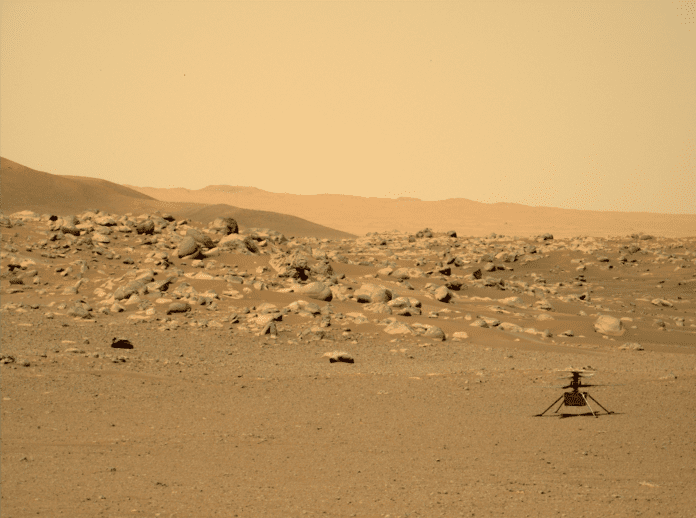NASA’s Mars helicopter, Ingenuity, logged its 34th successful flight last week, staying in the air for 18 seconds and reaching a maximum altitude of 5 meters. The brief flight was the helicopter’s first with its latest software update, which is expected to add capabilities including hazard avoidance during landing and the use of digital elevation maps to assist with navigation. Further flights to test Ingenuity’s upgraded capabilities are planned.
Ingenuity, a technology demonstrator sent to test powered, controlled flight on Mars, was launched with the Perseverance rover in July 2020. The 1.8-kilogram helicopter’s mission was officially extended last March to include supporting the rover as it explores the Jezero Crater. According to NASA, Ingenuity was originally designed to fly over flat terrain, necessitating the software update as it begins to move into rockier areas with fewer safe landing sites.
Since its first flight on April 19, 2021, Ingenuity has logged almost 59 minutes in the air and travelled a total distance of 7,392 meters (4.6 miles). Its highest flight to date reached 12 meters above the surface and its longest lasted 169.5 seconds. As previously reported by AVweb, NASA’s Jet Propulsion Laboratory Ingenuity Mars Helicopter team was awarded the 2021 Collier trophy for accomplishing “the first powered, controlled flight of an aircraft on another planet, thereby opening the skies of Mars and other worlds for future scientific discovery and exploration.”



































The mars helicopter Ingenuity is precisely what NASA was intended for. Cutting edge development of experimental concepts. I am extremely impressed with this program.
And then . . . I see them fooling around with the boondoggle SLS Artemis. Ancient technology. Outrageous cost. Nothing gained. They can’t even hook up the fuel connection without leaks. I know . . . hydrogen. But that was figured out long ago.
Congratulations to NASA for their successful Mars Helicopter ops. The tone of the messaging from NASA soon after the helicopter flew its early missions seemed to indicate they were not expecting much beyond verifying it could work. And now they are able to expand the envelope again.
Ingenuity is a remarkable achievement. The Mars atmosphere is so thin that this little electric helicopter is operating at an altitude that would be the equivalent of around 100,000′ MSL here on Earth. Not to mention that it uses fusion energy (light from the sun) to recharge its battery. It’s interesting to note that the first reusable flying machine on Mars is an EV.
It is quite an achievement, but no surprise that it is electrically powered. The Maritan air is too thin to support an internal combustion engine. Since it has performed way past its original operational parameters it will be interesting to see how long it will continue to operate in such severe conditions.
My first A&P job was with PHI in ’88 and I think it’s a hoot that the first flying vehicle on Mars is rotary-winged.
Hummmm. – what else?
The name Ingenuity says it all.